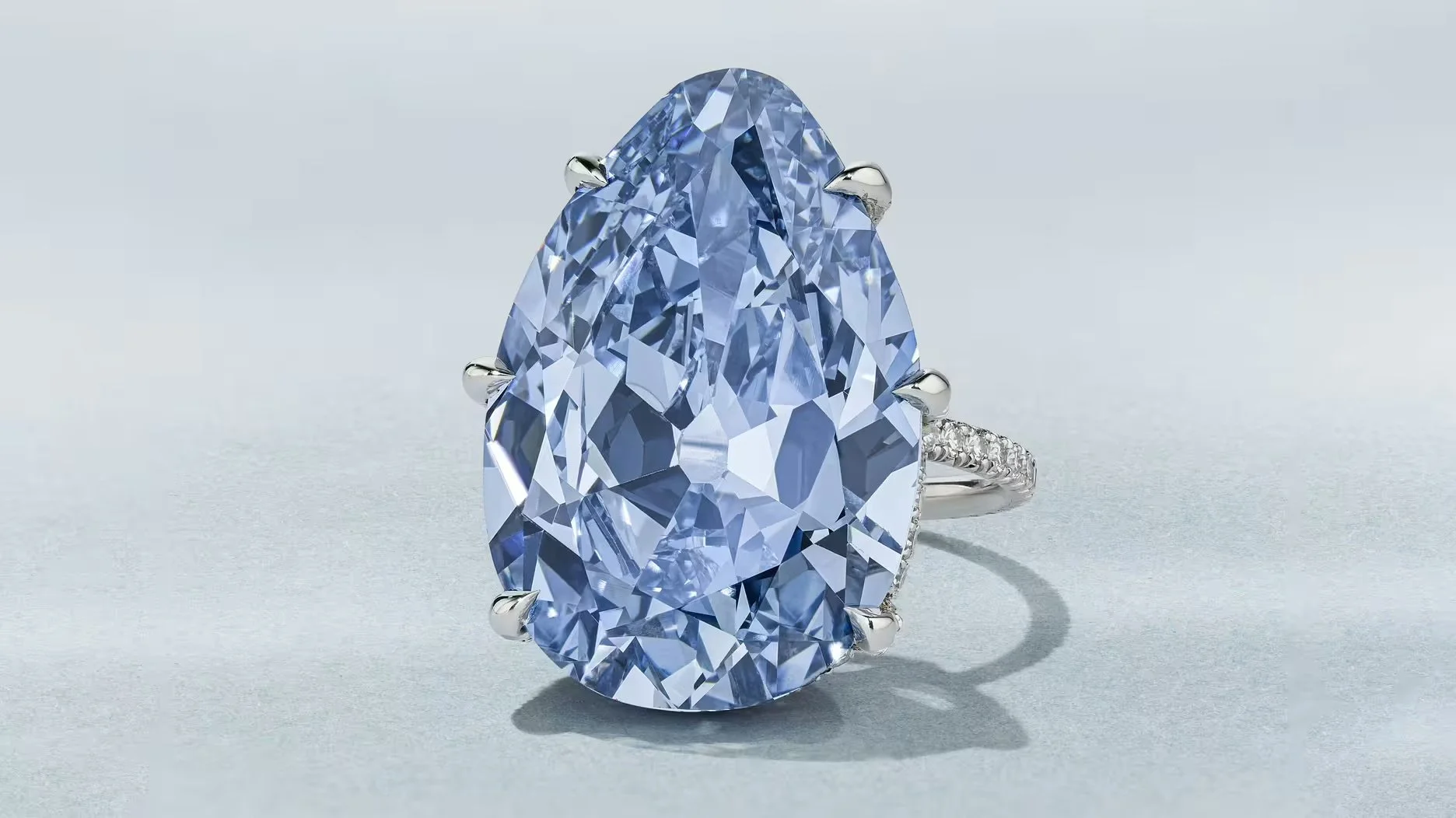The Golconda Blue Diamond
The Golconda Blue Diamond, a 23.24-carat Fancy Vivid Blue, was expected to be the star of Christie’s Geneva Magnificent Jewels auction in May 2025. Graded by the GIA as the largest Fancy Vivid Blue ever offered at auction, with an estimate of $35–50 million, it had the potential to set new benchmarks in the world of colored diamonds.
But just days before the sale, Christie’s confirmed that the stone had been withdrawn. The owner’s decision to keep the Golconda Blue within the family rather than sell it publicly underscored the unique position of such gems — they are not only assets of immense financial value but also carriers of heritage, memory, and private legacy.
The Golconda Blue’s importance is anchored in both its characteristics and its history. Fancy Vivid Blue diamonds represent the rarest classification of color, accounting for a fraction of one percent of all mined diamonds. To exceed 20 carats at this intensity is nearly unheard of. On a per-carat basis, it could have rivaled the likes of the Oppenheimer Blue (14.62 carats, $57.5 million, 2016) and the Blue Moon of Josephine (12.03 carats, $48.5 million, 2015).
Its provenance adds to its aura. The stone was once linked to the Holkar dynasty of Indore, one of India’s princely families known for their remarkable collection of gems. Many treasures of Indian royalty eventually passed into European collections, reflecting both the grandeur of their courts and the shifts of history.
Later, the Golconda Blue was set into a ring by Joel Arthur Rosenthal (JAR), the reclusive Paris-based jeweler whose creations are among the most coveted in the world. JAR produces only a handful of pieces each year, each imbued with artistry and rarity. For a diamond of this scale and quality to be mounted by him places the Golconda Blue in a category all its own — not just a gem, but a work of art.
The name itself evokes the fabled Golconda mines of India, source of some of the most legendary diamonds in history — the Hope, the Koh-i-Noor, the Regent. While the Golconda Blue was not mined there, its name places it within that tradition of extraordinary gems, tying it symbolically to centuries of diamond lore.
Although it never crossed the block in Geneva, the Golconda Blue remains a landmark stone. Its withdrawal serves as a reminder that not all treasures are destined for public ownership. Some will remain in the shadows — preserved within families, whispered about among collectors, and admired as much for their untold stories as for their measurable value.




